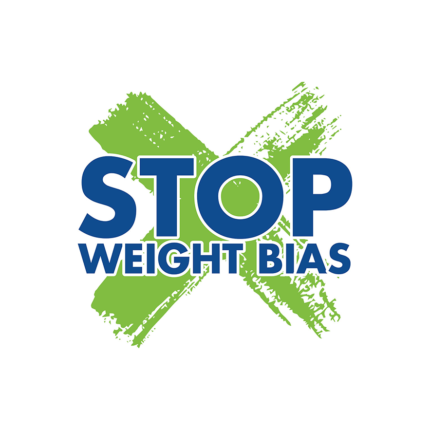Weight Bias Resources
The fight against weight bias requires the voices and actions of all of us working together. There are a variety of ways you can get involved with the OAC’s efforts to combat weight bias. They range from weight bias education to advocacy tools that you can share to help others avoid weight bias. For a full list of weight bias resources, check-out the OAC’s Weight Bias Program where you will also find our three-step approach for tackling this important issue.
Weight Bias Education
- Understanding Obesity Stigma Brochure
Educates the general public on weight bias, provides an in-depth look at weight bias on many fronts (healthcare, school, employment and more), and suggests ways we can work together to eradicate it
Weight Bias Guides
- Weight Bias in the Workplace
Educates employers on the impact of weight bias in the workplace and provides an in-depth look at Body Mass Index (BMI) incentives and penalties, workplace practices and more
- Weight Bias in Healthcare
Educates healthcare providers on the impact of weight bias in clinical settings, appropriate language when discussing weight with patients, and much more
Stop Weight Bias Campaign 
Stop Weight Bias is a national public awareness campaign produced by the OAC that is committed to raising awareness of weight bias, putting a stop to it, and pushing equality forward. From the campaign PSAs (public service announcements) and its rich stories to its advocacy tools and education, Stop Weight Bias aims to build a better world where individuals aren’t considered “less than” because of their weight. To learn more about the OAC’s Stop Weight Bias Campaign, visit StopWeightBias.com.
Resources for the Media:
OAC Image Gallery
The OAC Image Gallery provides the public with a set of images that are free of weight bias and stigma. Individuals with obesity are often portrayed in a negative light, with photos focused on uncontrolled eating, headless individuals, shots that are zoomed in on body parts and other common practices that perpetuate weight bias and stigma. With our Image Gallery, the OAC aims to provide better imagery showing individuals in a variety of activities and settings. We encourage the media, health professionals and others to use these images as a bias-free alternative and help change the way society sees individuals affected by the disease of obesity. To view the OAC Image Gallery, click here.
Guidelines for Media Portrayals of Individuals Affected by Obesity
The media is an influential source of information about obesity and shapes public understanding and attitudes about this important health issue. However, media representatives often unknowingly depict obesity and those affected by it in a negative light. In an effort to educate media representatives on how to appropriately discuss the disease of obesity in the media, the Obesity Action Coalition (OAC), along with The Rudd Center for Food Policy and Obesity and The Obesity Society (TOS), have developed the Guidelines for Media Portrayals of Individuals Affected by Obesity. To view the guidelines, click here.
How You Can Help and Respond to Weight Bias:
Get Involved in OAC’s Weight Bias Program
You can get directly involved in helping to put an end to weight bias by taking part in OAC’s Weight Bias Program. With an easy three-step approach, you can be on the front lines of making an impact to see a better world for people living with obesity. To learn more about OAC’s Weight Bias Program, please click here.
Weight Bias Reporting Tool
The OAC’s Weight Bias Reporting Tool lets you report instances of weight bias and alert us to any key issues. You can report personal instances of weight bias or issues in the media, pop culture and more. To use the OAC’s Weight Bias Reporting Tool, click here.
Championing People-First Language for Obesity
Learn how to use People-First Language to eradicate and prevent weight bias by changing how we refer to individuals with obesity. People-First Language puts a person before their diagnosis or disease and describes what a person “has” rather than asserting what a person “is.” People-First Language for obesity is encouraged in all settings – media, entertainment, healthcare, employment, education and others. To learn more about People-First Language, click here.
Have You Been a Victim of Weight Bias and Want to Share Your Story?
Sharing your story can help fight weight bias and raise awareness of this issue. To share your story, use the OAC’s Weight Bias Reporting Tool or click here to share your story in other ways.
